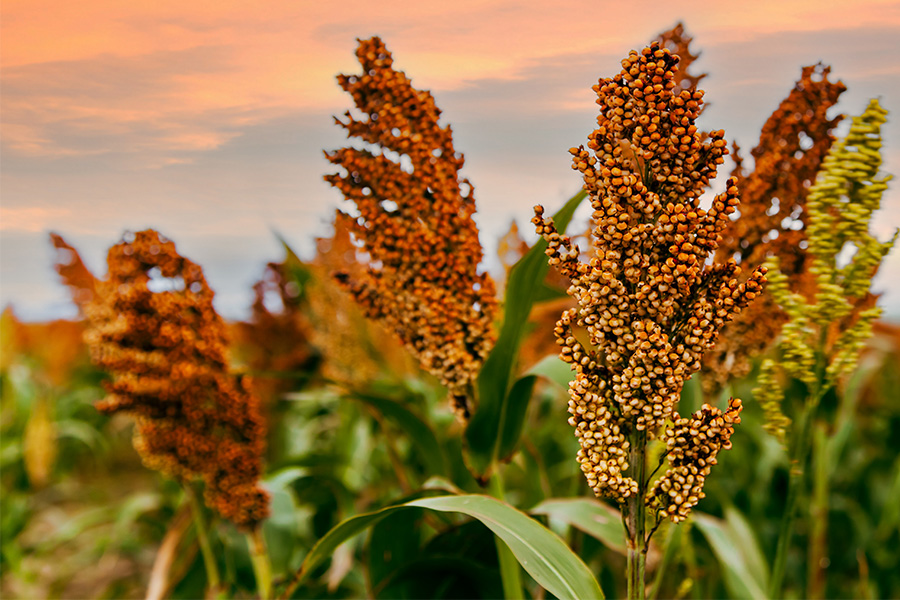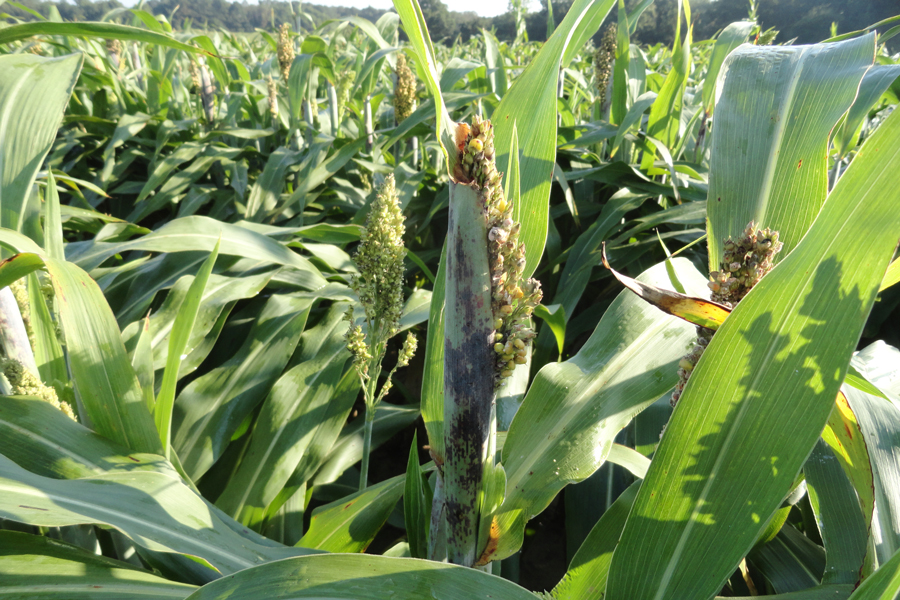Sorghum
-

Harvest losses can rob you of profit from grain and bean production. Harvest losses of 10 percent or more are not unusual, when they should be in the 2 to 4 percent range. If you do not check losses behind your combine, you have no idea what the losses are and where they occur during harvesting. The following procedure outlines how to measure losses during harvest. It also shows you where the losses occur. The grain or beans saved mean that much more profit saved.
Paul E. Sumner
|
-

The objective of this handbook is to provide rapid and extensive transfer of modern management technologies for small grain production. The intended audience includes Extension agents, industry personnel and dedicated producers.
G. David Buntin
|
-

SB 28-21
Grain Sorghum
Commercial insect and weed control in grain sorghum. Updated annually.
G. David Buntin, Eric P. Prostko, Alfredo Martinez, and Allison Faye Johnson
|
-

This resource lists the different types of pests that affect sorghum and its specific parts, as well as beneficial insects and mitigation techniques.
G. David Buntin
|
-

Compared to other grains, grain sorghum has unique characteristics that must be understood before successfully harvesting, drying and storing it. With some modifications, you can use existing equipment for both sorghum and other grains. This publication describes methods for harvesting, drying and storing grain sorghum.
Paul E. Sumner and John W. Worley
|
-

This publication contains information on the most important and common diseases of sorghum, the biology of the causal agents, as well as a detailed description of the disease symptoms (aided by high-quality detailed pictures), relevant up-to-date information on conditions favoring the diseases, as well as cultural, genetic and chemical methods of control. The publication is aimed for producers, crop consultants, county faculty, students, and general public.
Alfredo Martinez
|
-

This research report presents the results of the 2019 corn, sorghum and summer annual forage performance trials. Trials were conducted at seven locations throughout Georgia, depending on the crop. These included Tifton, Plains, and Midville in the Coastal Plain region, Athens and Griffin in the Piedmont region, Calhoun in the Limestone Valley region, and Blairsville in the Mountain region. Hybrids used for silage were evaluated at Tifton, Athens, Calhoun, and Blairsville.
Daniel J Mailhot
|
-

This research report presents the results of the 2017 statewide performance tests of soybean, sorghum grain and silage, and summer annual forages. The tests for various evaluations were conducted at several or all of the following locations: Tifton, Plains, and Midville in the Coastal Plain region; Griffin and Athens in the Piedmont region; and Calhoun in the Limestone Valley region.
Dustin G Dunn, Henry Jordan, and Daniel J Mailhot
|
-

This research report presents the results of the 2018 statewide performance tests of soybean, sorghum grain and silage, and summer annual forages. The tests for various evaluations were conducted at several or all of the following locations: Tifton, Plains, and Midville in the Coastal Plain region; Griffin and Athens in the Piedmont region; and Calhoun in the Limestone Valley region.
Dustin G Dunn, Henry Jordan, and Daniel J Mailhot
|